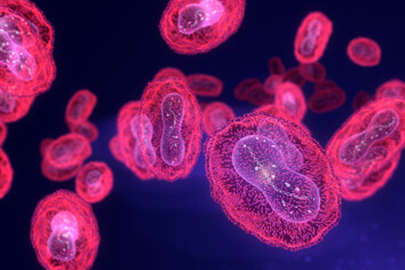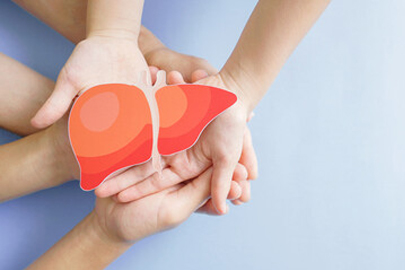2022 in brief
In 2022, ECDC delivered 89% of the outputs planned in its Single Programming Document 2022–2024. A total of 8% of the planned outputs were postponed, and 3% were delayed or cancelled by the end of the year. Most of the outputs that were postponed or delayed were dependent on the amended legal text of ECDC’s mandate, which was adopted and published in December 2022 (for details see Annex 1. Core business statistics 2022).
Work on the COVID-19 pandemic
 Throughout 2022, ECDC maintained its public health emergency (PHE) plan in response to the continuing COVID-19 pandemic for the third consecutive year. In June, due to a relatively stable epidemiological situation for COVID-19 and increasing needs related to the emerging threats of hepatitis and mpox, the PHE level was gradually downgraded from Level 2 (Acute Phase) to Level 1 (Maintenance Phase).
Throughout 2022, ECDC maintained its public health emergency (PHE) plan in response to the continuing COVID-19 pandemic for the third consecutive year. In June, due to a relatively stable epidemiological situation for COVID-19 and increasing needs related to the emerging threats of hepatitis and mpox, the PHE level was gradually downgraded from Level 2 (Acute Phase) to Level 1 (Maintenance Phase).
Nevertheless, ECDC’s pandemic-related workload remained high throughout the year, although the focus did shift towards longer-term monitoring, prevention and control of SARS-CoV-2. Throughout the year, ECDC continued to publish weekly COVID-19 country overview reports with multiple surveillance indicators, as reported by EU/EEA countries, while also incorporating data reported by the Western Balkan countries and Türkiye.
During 2022, some of ECDC’s efforts towards curbing the pandemic included the activities below.
- ECDC offered needs-based sequencing support to Member States that had not yet fully transitioned to WGS-based surveillance, to enhance their immediate capacity to detect and monitor SARS-CoV-2 variants under the EU bio-defence preparedness plan against SARS-CoV-2 variants.
- ECDC launched support to the Member States for microbiology capacity-building for SARS-CoV-2 and influenza. Contributions were made towards strengthening Member States’ capacities in surveillance and outbreak preparedness by extending molecular and genomic typing and providing technical support to public health reference laboratory networks and facilitation of scientific findings integrated into surveillance systems.
- ECDC continued to address social and behavioural aspects as well as effective risk communication for the prevention and control of specific diseases, with a particular focus on COVID-19 and promoting vaccination acceptance and uptake. A range of trainings was conducted on vaccination communication (for 11 Member States with sub-optimal COVID-19 vaccination uptake); risk communication (for the ECDC Summer School and the Health Security Initiative countries) and addressing vaccination misinformation (EPIET). The European Vaccine Monitoring Platform (VMP) was set up jointly with the European Medicines Agency (EMA) to assess the impact and effectiveness of COVID-19 brand-specific vaccines. The COVID-19 Vaccine Tracker continued to operate throughout 2022.
- ECDC worked through different approaches to collate lessons identified from the COVID-19 pandemic. An internal exercise was conducted to collect experiences from the ECDC experts involved in supporting work during the COVID-19 PHE, followed by the collection and review of ‘lessons learned’ reports published by different countries. In addition, six country visits were undertaken between May and September 2022 to discuss lessons identified at the country level. Finally, an expert consultation meeting, focusing on lessons learned from the COVID-19 pandemic, was organised with the Member States in September 2022, with the participation of more than 70 EU/EEA experts.
ECDC continued to manage the grants awarded to countries in September 2021 under the EU Health Emergency Preparedness and Response Authority (HERA) incubator, to strengthen WGS and diagnostic infrastructures within the countries' national public health programmes (more than EUR 77 million were awarded to 24 EU/EEA countries). The Agency also continued to collaborate with DG SANTE and the European Health and Digital Executive Agency (HaDEA) to award follow-up grants to countries under the EU4Health programme. The immediate objective was to reinforce countries' capacities for early detection and enhanced monitoring of emerging and known variants of SARS-CoV-2.
Ukraine Crisis, mpox and hepatitis
In addition to the ongoing COVID-19 pandemic, there were several other challenges which threatened public health in the European Union and demanded a proactive response from ECDC.
 Following Russia’s aggression in Ukraine and the influx of refugees fleeing the country, ECDC established the Ukraine Task Force (UTF) which actively coordinated and delivered technical and operational response activities, based on the needs identified which came within the remit of ECDC. In the second half of the year, the focus shifted from operational response to more medium-/longer-term and strategic response actions. Throughout the year, ECDC’s Director had regular meetings with the CCB directors and national coordinators from the five Member States bordering Ukraine, as well as with the CCB directors and national coordinators of all EU/EEA countries, to monitor the situation and adjust ECDC support as needed. In addition, ECDC infectious disease experts and communication officers were deployed to Poland and Romania in support of national authorities and the World Health Organization (WHO) to assist Ukrainian displaced populations.
Following Russia’s aggression in Ukraine and the influx of refugees fleeing the country, ECDC established the Ukraine Task Force (UTF) which actively coordinated and delivered technical and operational response activities, based on the needs identified which came within the remit of ECDC. In the second half of the year, the focus shifted from operational response to more medium-/longer-term and strategic response actions. Throughout the year, ECDC’s Director had regular meetings with the CCB directors and national coordinators from the five Member States bordering Ukraine, as well as with the CCB directors and national coordinators of all EU/EEA countries, to monitor the situation and adjust ECDC support as needed. In addition, ECDC infectious disease experts and communication officers were deployed to Poland and Romania in support of national authorities and the World Health Organization (WHO) to assist Ukrainian displaced populations.
 In 2022, a significant outbreak of mpox was detected in EU/EEA countries for the first time, with multiple humanto-human transmissions. ECDC launched a PHE to deal with this mpox outbreak, which operated from May to 7 October 2022. ECDC supported the surveillance, response, preparedness and prevention abilities and activities of the Member States. Various training courses and webinars were delivered to strengthen public and veterinary health professionals’ knowledge. ECDC published multiple risk assessments, epidemiological updates, such as the Joint Mpox Surveillance Bulletin with WHO’s Regional Office for Europe, and guidance documents.
In 2022, a significant outbreak of mpox was detected in EU/EEA countries for the first time, with multiple humanto-human transmissions. ECDC launched a PHE to deal with this mpox outbreak, which operated from May to 7 October 2022. ECDC supported the surveillance, response, preparedness and prevention abilities and activities of the Member States. Various training courses and webinars were delivered to strengthen public and veterinary health professionals’ knowledge. ECDC published multiple risk assessments, epidemiological updates, such as the Joint Mpox Surveillance Bulletin with WHO’s Regional Office for Europe, and guidance documents.
 Furthermore, between April and July 2022, a PHE was activated following an outbreak of hepatitis of unknown origin in children. During this period, ECDC set up a case-based surveillance system with a common case definition and reporting protocol for countries to report cases. Results from the analysis of this data were periodically published in the Joint ECDC/WHO Regional Office for Europe Surveillance Bulletin.
Furthermore, between April and July 2022, a PHE was activated following an outbreak of hepatitis of unknown origin in children. During this period, ECDC set up a case-based surveillance system with a common case definition and reporting protocol for countries to report cases. Results from the analysis of this data were periodically published in the Joint ECDC/WHO Regional Office for Europe Surveillance Bulletin.
Thus, during the spring and summer of 2022, ECDC was supporting three PHEs simultaneously. PHE teams were organised to ensure minimum overlap for the experts and managers involved, however, this experience was unique for ECDC and tested the limits of our capacity to develop risk assessments and guidance for multiple health threats.
ECDC's strengthened mandate
In October 2022, the Council adopted the amended ECDC Founding Regulation, as one of the final blocks of the European Health Union, thereby building a powerful legal framework to improve EU capacity in the vital areas of prevention, preparedness, surveillance, risk assessment, early warning, and response.
The main changes included in ECDC’s strengthened mandate are the following:
- support to EU Member States with digitalised EU-level surveillance;
- joint preparedness and response planning with EU Member States;
- stronger guidance through non-binding recommendations;
- enhanced support through the assistance of a standing, ready-to-deploy EU Health Task Force (EUHTF), as well as a reinforced international role;
- reinforced capacity for modelling and forecasting;
- focus on prevention and monitoring of health systems’ capacities for prevention, diagnosis, and treatment;
- coordination of a network of Union reference laboratories for public health (EURLN);
- coordination of a network of Member State services supporting the use of substances of human origin; and
- a new platform for post-authorisation monitoring of effectiveness and safety of vaccines, hosted jointly by EMA and ECDC.
To be able to implement the above, ECDC needs to change its focus and emphasis, as well as its way of working. In 2022, ECDC conducted a series of consultations with its stakeholders, regarding the new mandate in general and some of the areas of work in which the changes will have the most impact. In May, the mandate and its impact on ECDC’s way of working were discussed at the annual meeting for directors and national coordinators of ECDC Coordinating Competent Bodies (CCB), where the focus was on support for preparedness and response planning, digital solutions for EU surveillance and the EU Health Task Force.
In June, ECDC presented the proposal for the 2024 priorities to the Management Board and demonstrated how changes to the amended ECDC mandate were incorporated into its planning. In November, this discussion was followed up with the presentation of the high-level roadmap for the implementation of ECDC’s amended mandate. This roadmap encompasses the main milestones that the Centre aims to achieve in selected areas until 2027, including increased use of foresight; strengthening of digitalisation and integrated surveillance; transitioning to the EURL model, strengthening of preparedness and response planning; establishing the EU Health Task Force, and enhancing the role of ECDC as a global health security partner.
In addition, ECDC initiated a revision to the structure and content of its Strategy 2021–2027 to reflect the amended mandate, ensuring that ECDC’s actions in the coming years will focus on implementing the strengthened mandate and adapting the organisation and its way of working to future challenges.
Last but not least, ECDC’s transformation programme ‘ASPIRE’ (Anticipate, Support, Prepare, Inform, Respond, and Empower) was developed to make the Centre aware of the changes arising from the amended ECDC mandate and their impact on its ways of working, as well as to ensure smooth implementation.
ASPIRE will be implemented throughout 2023 and 2024 and will encompass initiatives such as a gap analysis of competencies and capabilities, an ecosystem analysis, the development of a stakeholder engagement framework, and revision of the Strategy implementation roadmap, key outputs, processes, and KPIs.